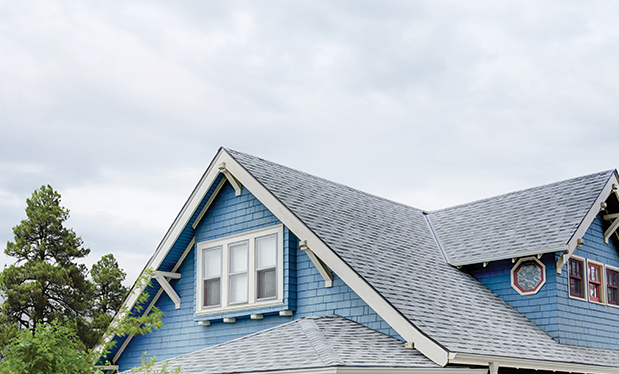Ladder use reduced as ladder-related injury numbers rise
As the number of ladder-related injuries in the workplace increases, companies are restricting ladder use and the ladder industry is offering new safety features.
According to the Bureau of Labor Statistics (BLS), deaths involving ladders increased 29 percent between 2011 and 2015 to 157 deaths while the overall number of on-the-job fatalities increased 3 percent between 2011 and 2015 to 4,836. Additionally, ladder-related injuries serious enough to require an employee to miss at least one day of work increased 9 percent from 2011 to 2015, reaching 23,920. In 2015, ladder-related injuries caused workers to miss a median of 21 days from their jobs.
BLS also reports injury numbers are highest in the construction industry with 11.2 injured workers for every 10,000 employees, prompting companies to restrict ladder use. For example, some employers are implementing initiatives that involve looking for ways to eliminate the need for ladders or requiring workers to get written permission from supervisors before using a ladder.
In addition, some manufacturers are reconsidering the need for ladders when designing new manufacturing plants. Toledo, Ohio-based Owens Corning opened a factory in Gastonia, N.C., in 2015 that eliminated about 85 percent of the proposed requirements for fixed and portable ladders.
When reducing ladder use, safe alternatives are necessary. Although the alternatives could come with a cost to employers, advocates say those costs will be paid for by fewer injury claims and lost work days.
The ladder industry is offering products and design innovations meant to reduce the chance of workers falling, such as eliminating the flat section atop A-frame ladders to discourage people from standing on top of a ladder; height-adjustable A-frame ladders with a cage at the top; and a clicking sound that lets workers know when they have reached the bottom rung of a ladder.
Judges reject industry arguments regarding workers' silica risks
A three-judge panel at the U.S. Court of Appeals for the District of Columbia Circuit rejected industry arguments against the Occupational Safety and Health Administration's (OSHA's) view of the risks posed by silica.
On Sept. 26, the judges heard arguments that could decide the future of a rule that sets tougher limits on worker exposure to silica. The previous rule set a permissible exposure limit (PEL) for airborne crystalline silica of 100 micrograms per cubic meter of air (100 μg/m3) for general industry and between 250 and 500 μg/m3 for construction and maritime. The new rule sets an action level at 25 μg/m3, which means employers must measure exposure above that level. For construction, the rule set a PEL for airborne crystalline silica of 50 μg/m3; the standard took effect Sept. 23.
"We do not dispute respirable silica can cause disease," William Wehrum, a partner at Hunton & Williams LLP and counsel for the industry petitioners, told the court. "The question is at what level and whether OSHA has proved a new level. [OSHA] came into this looking for a new level and had its thumb on the scale."
Wehrum said OSHA did not support its findings with substantial evidence and stated 100 μg/m3 is a safe level and regulating below that provides no real health benefits.
Judge Merrick Garland said scientists disagreed with Wehrum's statements, adding when there are scientists on both sides, OSHA can choose standards that best protect worker safety.
"It's OK for OSHA to go this way," Garland said. "You need to show OSHA's studies themselves are not supported by substantial evidence."
Brad Hammock, a principal in the Washington, D.C., offices of Jackson Lewis PC and counsel for the industry groups, said the rule wasn't economically and technologically feasible for the construction, foundry and fracking industries. Regarding the construction standard, he said exposure levels are unpredictable, meaning operators can't meet the rule most of the time.
Lauren Goodman with the Department of Labor's Office of the Solicitor said silica exposures can be reduced to the new exposure limit in most operations most of the time, making it feasible.
However, the judges criticized OSHA for allegedly failing to provide construction employees with adequate medical surveillance. Counsel for the United Steelworkers and the American Federation of Labor and Congress of Industrial Organizations said OSHA should protect workers removed from their jobs because of silica exposure, perhaps offering payment during transfer to a job with less exposure.
Louise Betts, attorney at the Office of the Solicitor, said OSHA disagrees.
"The unions have the burden of showing the alternative they seek is feasible and beneficial for worker health," she said. "Only seven standards, including lead, benzene and beryllium, have medical removal provisions."
John Martin, a shareholder at Ogletree, Deakins, Nash, Smoak & Stewart PC in Washington, D.C., said the judges questioned OSHA's argument.
"Judges Tatel and Garland hit OSHA hard on this, which could signal the D.C. circuit may remand the standard back to OSHA to consider inserting a medical removal provision," Martin said.
However, Martin also said oral argument typically is not the best indicator for how a court will decide a case.
Contractor appeals after judge rules solar installation isn't roofing work
Los Angeles-based electrical contractor Bergelectric Corp. is asking a federal appeals court to overturn a ruling it failed to protect workers from falls while they were installing solar panels on a hangar's roof at the Marine Corps Air Station Miramar in San Diego.
On Feb. 25, 2016, an Occupational Safety and Health Administration (OSHA) compliance officer observed Bergelectric employees working without fall protection on the hangar's roof. Warning lines were in use and a supervisor was acting as a safety monitor while employees worked on a lower roof about 43 feet above ground level and an upper roof that was an additional 17 feet above the lower level. No one fell from the roof, but OSHA issued a serious citation alleging three violations and proposed $4,500 in penalties.
Peggy Ball, an Occupational Safety and Health Review Commission administrative law judge, ruled Bergelectric's use of warning lines and a safety monitor was appropriate for roofing work on low-slope roofs. However, Ball rejected Bergelectric's argument that the standard it followed for low-slope roofs was appropriate.
The standard used was limited to "roofing work," Ball wrote, but the installation of solar panels doesn't fall under the definition of roofing, which includes insulation, sheet metal and vapor barrier work. Therefore, according to Ball, Bergelectric should have complied with a fall-protection standard requiring the use of guardrail systems, safety-net systems or personal fall-arrest systems. Ball assessed a $3,000 penalty.
On Oct. 17, Bergelectric filed a petition for review with the U.S. Court of Appeals for the Ninth Circuit after the commission declined to review Ball's decision. Bob Peterson, counsel for Bergelectric, told Bloomberg BNA the company likely will raise at least two arguments before the ninth circuit.
One argument will be the installation of solar panels on the hangar's roof was "of course" roofing work so the standard for low-slope roofs should apply, Peterson said.
In addition, Peterson said Bergelectric has denied exposing employees to a hazard, which is an element of a violation.
"The company doesn't believe anyone was exposed to the edge, so there was no employee exposure," he said.
White House expected to ease drone regulations
The White House is expected to announce model programs to ease drone regulations.
The programs were devised by the Office of Science and Technology Policy and would test technical advances and experiment with oversight in limited airspace. For the first time, the programs would link Federal Aviation Administration (FAA) rules with city, county or state requirements with a goal to expand the use of unmanned aircraft throughout the U.S.
According to industry officials, the plan involves the FAA's continued authority over commercial drone operations between 200 feet and 400 feet in designated test areas; drones at lower altitudes primarily would be regulated by states, counties or localities. The FAA currently has full authority over airspace at any altitude.
Eventually, there could be 10 or more discrete model programs throughout the U.S. though the White House likely would start with fewer models. Details such as altitude distinctions also still could change.
Deputy White House science adviser Michael Kratsios recently announced the changes, telling drone conference attendees in San Jose the administration favors "more engagement between industry and state, local and tribal governments." Following the speech, the drone industry's leading trade association asked President Trump for a pilot program "to explore the best options for states and municipalities to address their needs" regarding drone operations.
In 2016, the FAA adopted final rules covering commercial operations of drones weighing less than 55 pounds and typically flying below 400 feet. Operators need special approvals to fly at nighttime, beyond the sight of ground-based operators and in proximity to U.S. airports.
Congress currently is debating whether delegating responsibility to local communities would be wise as safety and privacy are concerns.
Trump administration officials have told industry leaders that even under shared local-state jurisdiction, the FAA will retain final authority regarding safety and other operational issues.
OSHA issues fine following electrocution of worker
SKI Masonry LLC, Pittsburgh, faces $201,354 in penalties after one of its workers was electrocuted while working on scaffolding that touched an electrical wire in April, the Occupational Safety and Health Administration (OSHA) said Oct. 23.
An Oct. 12 OSHA citation alleges SKI Masonry exposed its workers to dangerous falls and electrical hazards at a residential job site in Pittsburgh. One of the company's workers, 21-year-old Dakota Marshall, was fatally electrocuted when working on a chimney while on the top of scaffolding set up less than 2 feet from overhead electric lines.
When OSHA conducted a job-site inspection April 20, a federal safety inspector found an employee working from a 29-foot-high ladder jack scaffold without fall protection, saw workers climbing on cross-bracing or uprights 40 feet off the ground, and noted tubular welded frame scaffolding erected 15 inches away from noninsulated overhead power lines. The company was given two willful and five serious citations.
"SKI Masonry has been, and plans to, completely cooperate with OSHA officials," says Jeff Dzikowski, owner of SKI Masonry. "We have been greatly improving our safety equipment and procedures in hopes to ensure the safety of our employees."
Immigration agency chief vows increase in job-site enforcement

Photo courtesy of Immigration and Customs Enforcement |
Immigration and Customs Enforcement (ICE) Director Tom Homan asserted ICE will spend "four to five times" the amount of time currently spent on work-site enforcement in the coming fiscal year. Homan made the remarks during a Heritage Foundation event Oct. 17.
According to Homan, "unless you remove the magnets" such as the ability to obtain a job in the U.S., unauthorized immigrants will continue to enter the country.
"So we are stepping up work-site enforcement," he said. "We've already increased the number of inspections and work-site operations."
Mark Krikorian, executive director of the Center for Immigration Studies, believes ICE is moving in the right direction, asserting that quadrupling or quintupling work-site enforcement isn't "overly ambitious."
"It's not that hard if it's almost zero now," he added.
American Immigration Attorneys Association President-Elect Anastasia Tonello said employers that deliberately hire and exploit undocumented workers "should be penalized." But she also expressed concern the ramped-up enforcement won't be conducted fairly.
"I'm concerned they're taking these bad apples and saying this is everyone [who employs immigrants]," Tonello said.
In addition to an increase in enforcement activity, work-site enforcement also will be different, Homan explained. ICE will prosecute employers that knowingly hire undocumented workers, and the workers now will be detained and removed.
Krikorian agrees with the changes, adding audits of employers' I-9 employment eligibility verification forms are useful but can't be the only enforcement tactic.
In addition, according to Krikorian, arresting undocumented workers and charging them with crimes such as identity theft allows ICE to use the workers as witnesses. ICE may offer to drop charges, allowing workers to be removed without serving jail time, in exchange for their testimonies against their employers that could be in violation of more than just immigration law.
According to Tonello, there's a good chance ICE could target small businesses that aren't intentionally violating the law but just aren't as good at record keeping. She argued attorneys should conduct outreach to make sure these businesses understand their rights in an enforcement situation, as well as what documents employees do and don't need to produce to prove their employment eligibility.
Whether ICE follows through on its enforcement plans remains to be seen. Although ICE's Homeland Security Investigations unit traditionally has focused on customs enforcement despite its immigration-related mission, Krikorian believes ICE will follow through.
"The first test is whether ICE actually ramps up work-site enforcement," Krikorian said. "I think they're going to pass that test."
However, according to Krikorian, the second test is whether ICE is willing to go after companies that have engaged in political lobbying or made campaign donations.
"The track record is not encouraging for the past administrations," he said.



